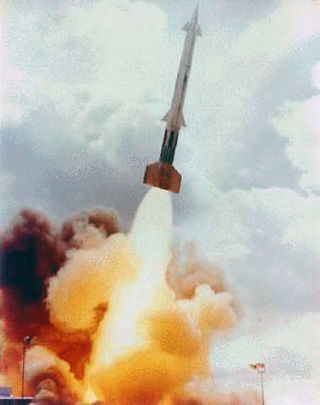
The Anti-Ballistic Missile Treaty, also known as the ABM Treaty or ABMT, was an arms control treaty between the United States and the Soviet Union on the limitation of the anti-ballistic missile (ABM) systems used in defending areas against ballistic missile-delivered nuclear weapons. It was intended to reduce pressures to build more nuclear weapons to maintain deterrence. Under the terms of the treaty, each party was limited to two ABM complexes, each of which was to be limited to 100 anti-ballistic missiles.
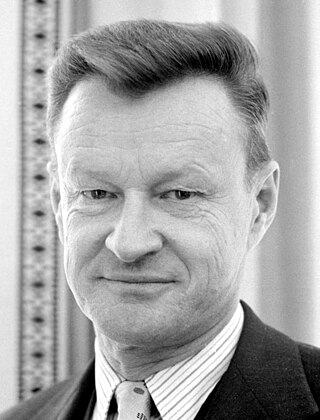
Zbigniew Kazimierz Brzeziński, known as Zbig, was a Polish-American diplomat and political scientist. He served as a counselor to Lyndon B. Johnson from 1966 to 1968 and was Jimmy Carter's National Security Advisor from 1977 to 1981. As a scholar, Brzezinski belonged to the realist school of international relations, standing in the geopolitical tradition of Halford Mackinder and Nicholas J. Spykman, while elements of liberal idealism have also been identified in his outlook. Brzezinski was the primary organizer of The Trilateral Commission.
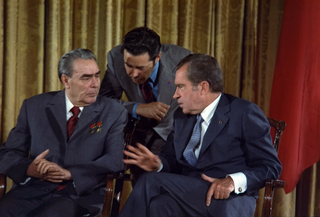
Détente is the relaxation of strained relations, especially political ones, through verbal communication. The diplomacy term originates from around 1912, when France and Germany tried unsuccessfully to reduce tensions.

Containment was a geopolitical strategic foreign policy pursued by the United States during the Cold War to prevent the spread of communism after the end of World War II. The name was loosely related to the term cordon sanitaire, which was containment of the Soviet Union in the interwar period.

The Intermediate-Range Nuclear Forces Treaty was an arms control treaty between the United States and the Soviet Union. US President Ronald Reagan and Soviet General Secretary Mikhail Gorbachev signed the treaty on 8 December 1987. The US Senate approved the treaty on 27 May 1988, and Reagan and Gorbachev ratified it on 1 June 1988.
United States Objectives and Programs for National Security, better known as NSC 68, was a 66-page top secret U.S. National Security Council (NSC) policy paper drafted by the Department of State and Department of Defense and presented to President Harry S. Truman on 7 April 1950. It was one of the most important American policy statements of the Cold War. In the words of scholar Ernest R. May, NSC 68 "provided the blueprint for the militarization of the Cold War from 1950 to the collapse of the Soviet Union at the beginning of the 1990s." NSC 68 and its subsequent amplifications advocated a large expansion in the military budget of the United States, the development of a hydrogen bomb, and increased military aid to allies of the United States. It made the rollback of global Communist expansion a high priority and rejected the alternative policies of détente and containment of the Soviet Union.

Harold Brown was an American nuclear physicist who served as United States Secretary of Defense from 1977 to 1981, under President Jimmy Carter. Previously, in the John F. Kennedy and Lyndon B. Johnson administrations, he held the posts of Director of Defense Research and Engineering (1961–1965) and United States Secretary of the Air Force (1965–1969).

The Single Integrated Operational Plan (SIOP) was the United States' general plan for nuclear war from 1961 to 2003. The SIOP gave the President of the United States a range of targeting options, and described launch procedures and target sets against which nuclear weapons would be launched. The plan integrated the capabilities of the nuclear triad of strategic bombers, land-based intercontinental ballistic missiles (ICBM), and sea-based submarine-launched ballistic missiles (SLBM). The SIOP was a highly classified document, and was one of the most secret and sensitive issues in U.S. national security policy.

Ashton Baldwin Carter was an American government official and academic who served as the 25th United States secretary of defense from February 2015 to January 2017. He later served as director of the Belfer Center for Science & International Affairs at Harvard Kennedy School.
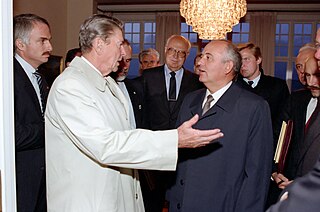
The Reykjavík Summit was a summit meeting between U.S. President Ronald Reagan and General Secretary of the Communist Party of the Soviet Union Mikhail Gorbachev, held in Reykjavík, Iceland, on 11–12 October 1986. The talks collapsed at the last minute, but the progress that had been achieved eventually resulted in the 1987 Intermediate-Range Nuclear Forces Treaty between the United States and the Soviet Union.

Robert G. Joseph is a senior scholar at the National Institute for Public Policy. He was the United States Special Envoy for Nuclear Nonproliferation, with ambassadorial rank. Prior to this post, Joseph was the Under Secretary of State for Arms Control and International Security, a position he held until January 24, 2007. Joseph is known for being instrumental in creating the Proliferation Security Initiative and as the architect of the Global Initiative to Combat Nuclear Terrorism. He was also the US chief negotiator to Libya in 2003 who convinced the Libyans to give up their WMD programs. He also recently authored a book describing his experience in negotiating with Libya entitled "Countering WMD."

Gregory L. Schulte was the U.S. ambassador to the International Atomic Energy Agency from July 2005 through June 2009. Schulte served as the Permanent Representative of the United States to the United Nations Office at Vienna, the International Atomic Energy Agency, and other international organizations in Vienna. Assuming his post on July 13, 2005, Schulte was charged with advancing the President's agenda in countering proliferation, terrorism, organized crime, and corruption, while promoting the peaceful use of nuclear energy.
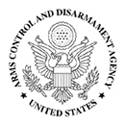
The U.S. Arms Control and Disarmament Agency (ACDA) was an independent agency of the United States government that existed from 1961 to 1999. Its mission was to strengthen United States national security by "formulating, advocating, negotiating, implementing and verifying effective arms control, nonproliferation, and disarmament policies, strategies, and agreements."

The New Look was the name given to the national security policy of the United States during the administration of President Dwight D. Eisenhower. It reflected Eisenhower's concern for balancing the Cold War military commitments of the United States with the nation's financial resources. The policy emphasized reliance on strategic nuclear weapons as well as a reorganisation of conventional forces in an effort to deter potential threats, both conventional and nuclear, from the Eastern Bloc of nations headed by the Soviet Union.

Franklin Carroll Miller is a foreign policy and nuclear defense policy expert. Miller served 31 years in the U.S. government, including the Department of State, the Department of Defense and a Special Assistant to President George W. Bush. He is principal at the Washington-based international business advisory firm The Scowcroft Group.

Jack Foust Matlock Jr. is an American former ambassador, career Foreign Service Officer, teacher, historian, and linguist. He was a specialist in Soviet affairs during some of the most tumultuous years of the Cold War, and served as the U.S. ambassador to the Soviet Union from 1987 to 1991.

William Flynn Martin is an American energy economist, educator, and international diplomat. Martin served as Special Assistant to Ronald Reagan for National Security Affairs, Executive Secretary of the United States National Security Council, and United States Deputy Secretary of Energy during the Ronald Reagan Administration. He was President of the Council of the University for Peace, appointed to the Council by Secretary General of the United Nations Kofi Annan. In 1992, he was Executive Director of the Republican Platform committee under George H. W. Bush. William Martin served for ten years as Chairman of the Nuclear Energy Advisory Committee during the administrations of George W. Bush and Barack Obama.

Dangerous Capabilities: Paul Nitze and the Cold War is a biography of Paul Nitze, the Cold War strategist and diplomat. It was published by HarperCollins in 1990 and written by David Callahan.

Project Solarium was an American national-level exercise in strategy and foreign policy design convened by President Dwight D. Eisenhower in the summer of 1953. It was intended to produce consensus among senior officials in the national security community on the most effective strategy for responding to Soviet expansionism in the wake of the early Cold War. The exercise was the product of a series of conversations between President Eisenhower and senior cabinet-level officials, including Secretary of State John Foster Dulles and George F. Kennan, in the Solarium room on the top floor of the White House. Through these conversations, Eisenhower realized that strategic guidance set forth in NSC 68 under the Truman administration was insufficient to address the breadth of issues with which his administration was presented, and that his cabinet was badly divided on the correct course of action to deal with the Soviet Union. He found that internal political posturing threatened to undermine policy planning, and thus U.S. national security.
Proud Prophet was a war game played by the United States that began on June 20, 1983, and was designed by Thomas Schelling. The simulation was played in real time during the Cold War. Proud Prophet was essentially played to test out various proposals and strategies, in response to the Soviet Union's military buildup. There were advocates for a number of strategies, which varied from demonstration nuclear attacks, limited nuclear war, and decapitation attacks. It was not possible for the United States to pursue each of these strategies. President Ronald Reagan and his administration were faced with the dilemma of figuring out how the United States should respond to the Soviet Union's large nuclear programs, while finding which strategy would be most effective.























